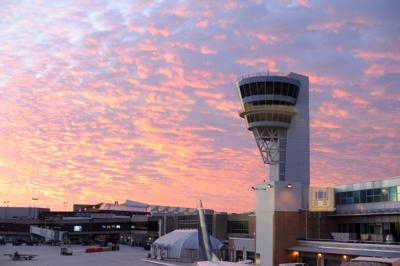Sat, Jul 01, 2023
Post-Pandemic Levels of Traffic Aren't Seeing Pre-Pandemic Staffing
A disconcerting report from the Department of Transportation's Office of the Inspector General reviewed a few ongoing problems in the ATC network, pointing to staffing challenges and an uncertain training pipeline as chief concerns.

The FAA made "limited efforts to ensure adequate controller staffing at critical air traffic control facilities," began the findings brief. Also worrisome, it added, was that "the Agency also has yet to implement a standardized scheduling tool to optimize controller scheduling practices at these facilities, and FAA officials disagree on how to account for trainees when determining staffing numbers." That lack of clear direction bears out in a few other ways, where locations stand shorthanded due to unclear and changing training timelines.
The report said that the FAA continues to face staffing challenges, as expected to some degree after a 2-year interruption in training and stable operations - but disconcertingly "lacks a plan to address them". The DoT report said that lack of planning "poses a risk to the continuity of air traffic operations", with spot checks revealing that 20 of 26 (77%) critical facilities are staffed below the FAA's minimum 85% threshold. And it's not just backwater, low traffic regions of the country. High-traffic centers like New York Terminal Radar Approach Control and Miami Tower sit at eyebrow-raising 54% and 66% staffing.
The COVID interruption continues to be felt throughout the ATC circuit, too, with years of training pauses stacking up to compound an already inconsistent flow of fresh blood into the industry. The training pause added another 2-year delay, which will "significantly increase controller certification times". Like the rest of the report, the FAA... doesn't really have a plan for that, either. The DoT said "The FAA will not know the full impact of the training suspension on certification times for several years because training outcomes vary widely, and it can take more than 3 years to train a controller. Due to these uncertain training outcomes, the FAA cannot ensure it will successfully train enough controllers in the short term."
The report issued a pair of recommendations to safeguard minimal staffing levels. First, the review of the models used to distribute certified professional controllers for ATC facilities, and update interim staffing levels as necessary. Secondly, the implementation of a new labor distribution system with features for timekeeping, overtime, and Controller-in-Charge tracking.
More News
“While legendary World War II aircraft such as the Corsair and P-51 Mustang still were widely flown at the start of the Korean War in 1950, a new age of jets rapidly came to >[...]
Decision Altitude (DA) A specified altitude (mean sea level (MSL)) on an instrument approach procedure (ILS, GLS, vertically guided RNAV) at which the pilot must decide whether to >[...]
Aero Linx: National Aviation Safety Foundation (NASF) The National Aviation Safety Foundation is a support group whose objective is to enhance aviation safety through educational p>[...]
Also: Cal Poly Aviation Club, $$un Country, Arkansas Aviation Academy, Teamsters Local 2118 In response to two recent general aviation accidents that made national headlines, more >[...]
“The FAA is tasked with ensuring our skies are safe, and they do a great job at it, but there is something about the system that is holding up the medical process. Obviously,>[...]
 Aero-News: Quote of the Day (04.28.25)
Aero-News: Quote of the Day (04.28.25) ANN's Daily Aero-Term (04.28.25): Decision Altitude (DA)
ANN's Daily Aero-Term (04.28.25): Decision Altitude (DA) ANN's Daily Aero-Linx (04.28.25)
ANN's Daily Aero-Linx (04.28.25) Airborne-Flight Training 04.24.25: GA Refocused, Seminole/Epic, WestJet v TFWP
Airborne-Flight Training 04.24.25: GA Refocused, Seminole/Epic, WestJet v TFWP Aero-News: Quote of the Day (04.29.25)
Aero-News: Quote of the Day (04.29.25)



